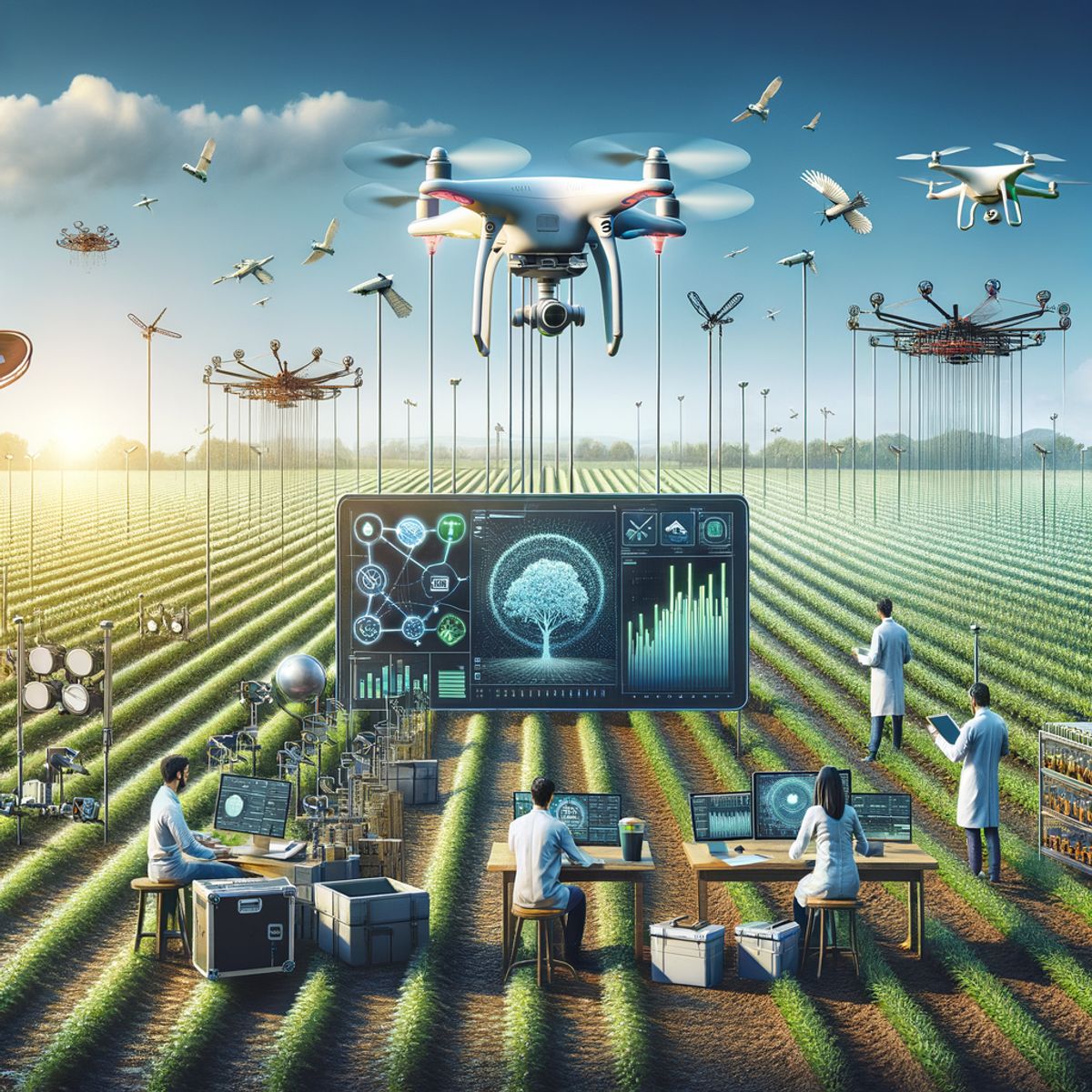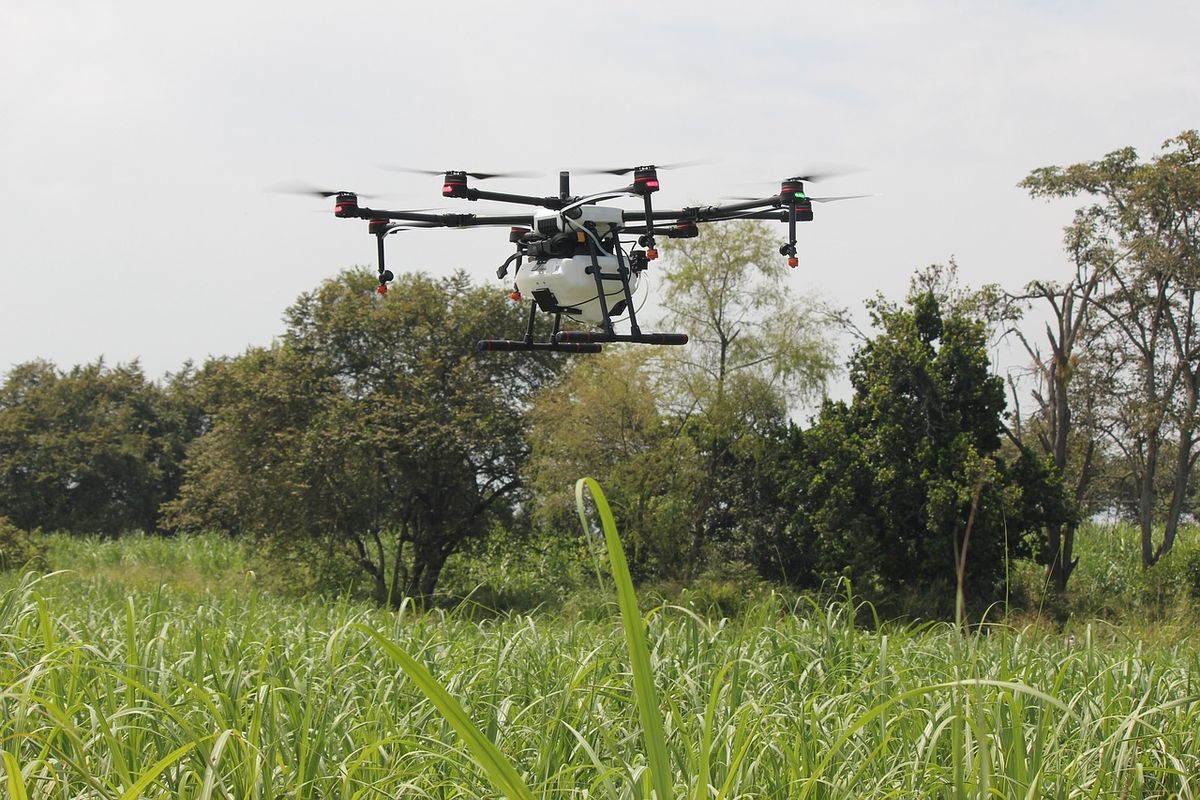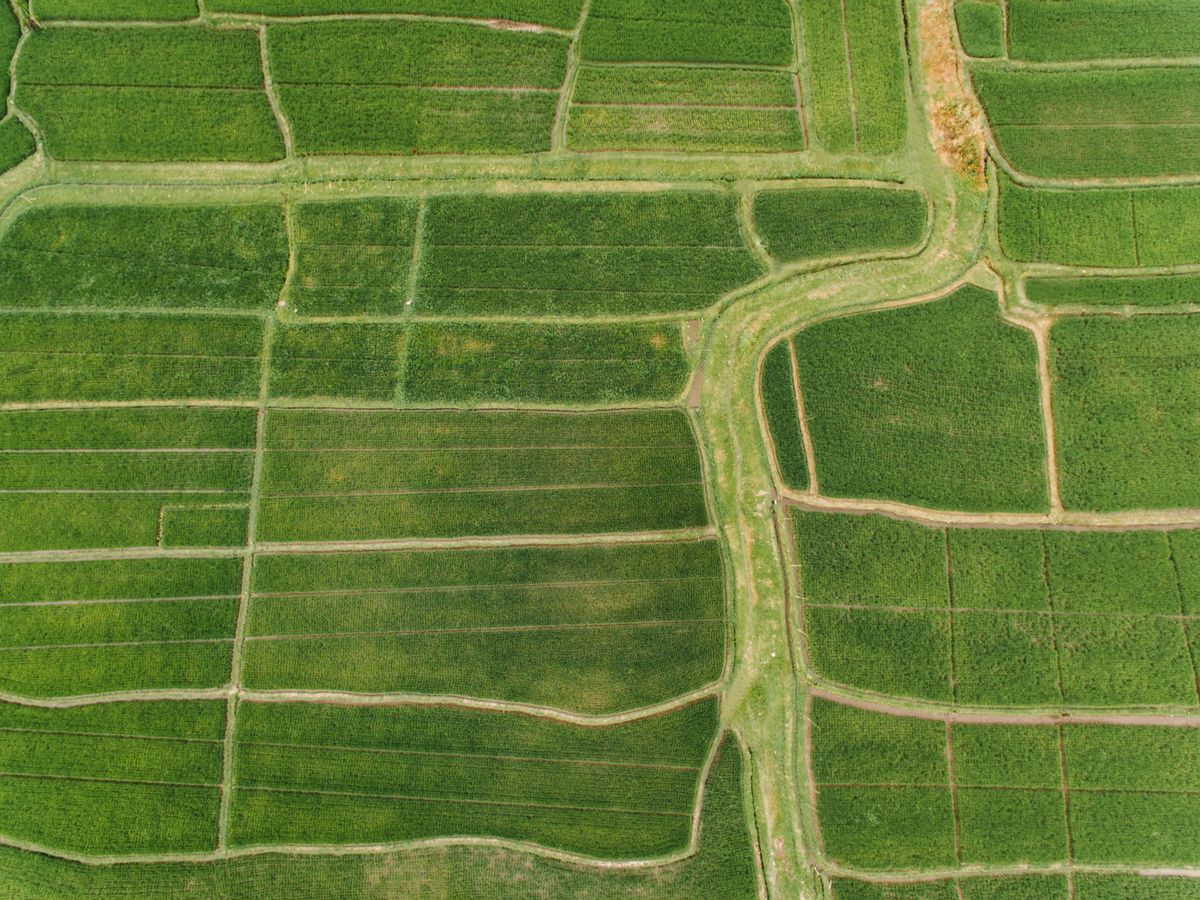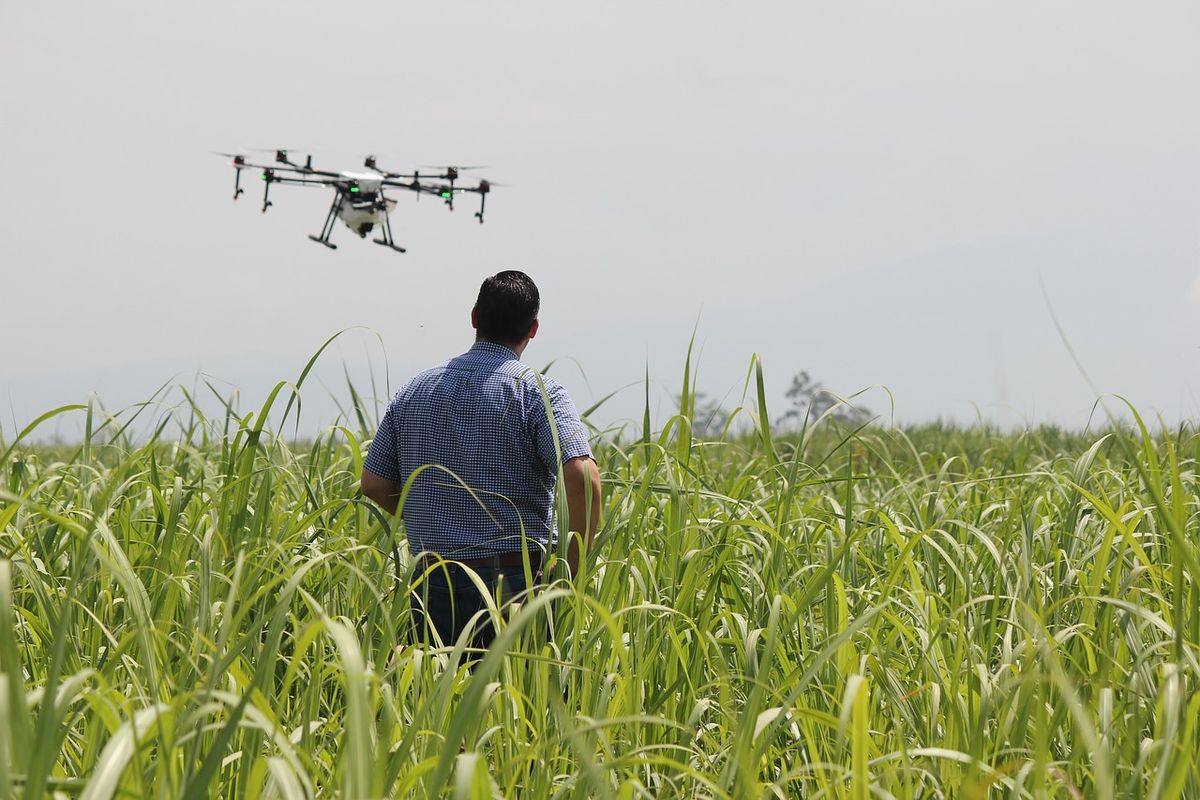Precision agriculture is at the forefront of revolutionizing farming practices, offering a synergistic blend of technology and agronomy to enhance productivity, efficiency, and sustainability.
As we look towards 2024, the integration of cutting-edge technologies such as GPS, high-resolution imaging, and IoT sensors is transforming how farmers manage their crops and land. This article delves into the emerging technologies, applications, economic and environmental benefits, and the challenges that come with adopting precision agriculture.
Table of Contents
Key Takeaways
- Precision agriculture leverages GPS, high-resolution imaging, and IoT to make farming more efficient and sustainable.
- Advancements in technology are optimizing crop management, soil health, and resource use, leading to increased yields.
- The economic benefits include a projected market growth to $26.68 billion by 2025, with an annual growth rate of 13.1%.
- Environmental benefits include reduced waste and enhanced water conservation, contributing to sustainable farming practices.
- Challenges for adoption include high initial costs, equipment accessibility, and data security concerns.
Emerging Technologies in Precision Agriculture

GPS-Guided Machinery and Equipment
The integration of GPS-guided machinery and equipment in precision agriculture marks a significant leap forward in farming efficiency. GPS technology enables the precise application of inputs, such as seeds and fertilizers, based on specific location data, thereby avoiding waste and conserving resources. This technology is particularly effective in minimizing overlap during field operations, with auto-steering tractors and map-driven seeding systems that adjust plant populations to match soil conditions.
The use of GPS in agriculture extends beyond mere guidance; it is a cornerstone for smart irrigation systems and precision input management, aiming for environmental sustainability alongside enhanced crop management.
Adoption rates of GPS-guided systems vary globally, with significant uptake in the United States. For instance, over 25% of peanut farms utilize GPS soil mapping, and more than 40% employ auto-steering. However, in Europe, the adoption of guidance technology is slightly lower, and the use of variable rate technology for fertilizers is not as widespread.
- Precision Input Management: Optimizes crop inputs and reduces waste.
- Auto-steering GNSS-controlled Tractors: Minimize overlap and enhance efficiency.
- Smart Irrigation Systems: Manage water distribution effectively.
High-Resolution Imaging for Crop Monitoring
The advent of high-resolution imaging has revolutionized the way farmers monitor their crops. With the integration of 20MP high-resolution AR2020 sensor-powered cameras, precision agriculture has taken a significant leap forward. These advanced cameras facilitate detailed field analysis, allowing for the identification and improvement of crop yields.
- Crop Monitoring: Easily compare satellite imagery data layers without specific facilities.
- Topography Analytics: Generate topographic models using machinery, remote sensing, and LIDAR datasets.
- 3D Maps: Create detailed visual representations of the terrain.
The use of drones and sensors for continuous data collection on environmental conditions and crop growth parameters is a game-changer. It empowers farmers with actionable insights for informed decision-making.
The integration of this technology not only enhances the effectiveness of automated farming equipment but also contributes to increased profitability and sustainable agricultural practices. As we move towards more data-driven farming, the role of high-resolution imaging in agriculture continues to grow, shaping the future of crop monitoring and farm management.
IoT and Sensor-Based Environmental Data Collection
The integration of the Internet of Things (IoT) in agriculture marks a significant leap towards smart farming. Real-time data collection and analysis, enabled by a network of sensors, drones, and other IoT devices, provide a granular view of farm conditions. This data-driven approach allows for precise monitoring and management of soil moisture, weather conditions, and crop health.
IoT technology facilitates a level of precision in agriculture that was previously unattainable, optimizing resource use and enhancing crop management.
The following points highlight the key components of IoT in agriculture:
- GPS: Precise application of inputs based on location.
- Data Collection: Utilizes sensors, satellites, drones, and weather stations.
- Intra-field Diagnosis: Crop sensing and mapping for site-specific management.
- Automatic Variable-Rate Treatments: Targeted resource application.
Automation, a cornerstone of IoT in agriculture, streamlines tasks such as irrigation and pest control, reducing labor and maximizing efficiency. The synergy of these technologies propels farmers towards achieving higher productivity and sustainability.
Applications and Impact on Farming Practices

Optimizing Crop Management and Soil Health
The integration of precision agriculture technologies has revolutionized the way farmers manage crops and soil health. By precisely managing resources such as water, fertilizers, and pesticides, farmers achieve greater efficiency, leading to savings in labor costs and a reduced ecological footprint. This approach not only enhances harvest quality but also promotes sustainable farming practices by minimizing waste and reducing the use of inputs.
Predictive modeling techniques and site-specific crop management allow for the anticipation of yields, identification of potential risks, and strategic planning. This proactive stance mitigates losses and maximizes profitability, which is crucial in meeting the demands of a growing global population.
Precision agriculture is pivotal in optimizing fertilizer usage and restoring soil health through informed decision-making and targeted interventions.
The following table summarizes the key benefits of optimizing crop management and soil health through precision agriculture:
| Benefit | Description |
|---|---|
| Enhanced Harvest Quality | Optimized input use leads to healthier crops. |
| Resource Conservation | Reduced chemical usage and mitigated soil erosion preserve natural resources. |
| Biodiversity Preservation | Sustainable practices contribute to long-term agricultural resilience. |
| Economic Efficiency | Savings in labor and input costs due to targeted resource management. |
Variable Rate Technology for Resource Efficiency
Variable Rate Technology (VRT) is revolutionizing the way farmers manage their resources. By applying inputs at variable rates, VRT tailors the application of water, fertilizers, and pesticides to the specific needs of each plot. This precision approach is facilitated by the use of maps or sensors that adjust input concentrations during application, ensuring that each square inch of soil receives exactly what it needs.
The adoption of VRT is growing rapidly, as it offers a more efficient and precise utilization of resources. For instance, smart irrigation systems are now capable of managing water usage in real-time, which not only enhances farm productivity but also promotes sustainability.
With the integration of VRT, precision agriculture is poised to optimize resource usage, reduce environmental impact, and significantly enhance productivity.
The following list highlights some key applications of VRT:
- Seeding that matches plant populations with soil conditions based on historical crop yield data.
- Automatic variable-rate treatments that ensure targeted resource application, aligning with production and environmental goals.
- GPS guidance systems that provide precise navigation of agricultural machinery, reducing errors and operator fatigue.
Data-Driven Decision Making in Agriculture
In the 2024 growing season, data-driven decision making is at the forefront of agricultural innovation. Farmers are increasingly relying on analytics and predictive modeling to guide their strategies. By leveraging data from sensors, satellites, and historical records, actionable insights are obtained to enhance crop growth and soil health.
- Access to big data has democratized precision agriculture, making it accessible to small-scale farmers.
- Farm management software has become a critical tool for visualizing and interpreting complex data.
- Automation in agriculture, driven by IoT, is streamlining tasks and improving resource efficiency.
Data-driven approaches are enabling farmers to adapt swiftly to environmental changes, ensuring sustainable and profitable farming practices.
Collaboration between public and private entities is essential to provide farmers with the timely data needed for informed decision-making. The integration of technology in agriculture is not just about adopting new tools; it’s about transforming the farming ecosystem into a more efficient, responsive, and environmentally conscious domain.
Economic and Environmental Benefits

Boosting Crop Yields and Reducing Waste
The integration of precision agriculture technologies has led to a significant shift in farming practices, enabling farmers to maximize yields while minimizing waste. By leveraging data-driven insights, agriculturalists can optimize the use of resources such as water, fertilizers, and pesticides, which not only enhances crop production but also promotes sustainable farming practices.
Precision agriculture is pivotal in addressing the dual challenge of increasing food production for a growing population and reducing the environmental impact of farming.
The economic benefits are equally compelling, as precision agriculture contributes to cost savings through more efficient resource management. Here’s a snapshot of the impact:
- Increased Efficiency: Precise application of inputs reduces overuse and waste.
- Healthier Crops: Targeted interventions lead to better crop health and yield.
- Resource Conservation: Optimization of water and fertilizer use contributes to sustainability.
- Economic Savings: Reduced input costs and improved crop output boost profitability.
While the promise of precision agriculture is clear, the journey towards widespread adoption is marked by challenges such as high initial costs and the need for technological literacy among farmers.
Sustainable Farming and Water Conservation
The integration of precision agriculture technologies has ushered in a new era of sustainable farming, where the meticulous management of resources is paramount. Farmers are now able to significantly reduce waste and the environmental impact of traditional farming methods. This shift not only bolsters crop yields but also aligns with the growing consumer demand for environmentally responsible practices.
By adopting precision agriculture, farmers have seen a marked decrease in the use of irrigation water, fertilizers, and pesticides. Studies in various regions report reductions in irrigation water usage by up to 21%, showcasing the potential for substantial water conservation. The table below summarizes the impact of precision agriculture on resource usage:
| Resource | Average Reduction |
|---|---|
| Water | 21% |
| Fertilizer | 15% |
| Pesticides | 10% |
The key objective is to minimize resource use and prevent environmental degradation. Conservation Agriculture practices are at the heart of this movement, focusing on soil health, water conservation, and reducing chemical runoff.
Despite the clear benefits, challenges remain in fully implementing these technologies. High initial costs and the need for specialized equipment can be barriers to widespread adoption. However, the long-term gains in efficiency and sustainability are compelling incentives for farmers to embrace precision agriculture.
Economic Projections and Market Growth
The Precision Farming Market is on a trajectory of rapid expansion. Doubling growth is projected by 2031, with figures surging from USD 9.7 billion in 2023 to an impressive USD 21.9 billion, at a compound annual growth rate (CAGR) of 10.7%. This growth is fueled by the increasing adoption of advanced technologies in agriculture and the rising demand for sustainable farming practices.
The economic implications of precision agriculture are profound, with market expansion indicating a shift towards more data-driven and resource-efficient farming methods.
The market’s upward trend is supported by a variety of factors, including technological advancements, government incentives, and a growing awareness of environmental issues. As the industry evolves, stakeholders are keen to capitalize on the opportunities presented by precision agriculture to enhance productivity and sustainability.
Challenges and Considerations for Adoption

Overcoming High Initial Investment Costs
The transition to precision agriculture often comes with significant upfront costs, which can be particularly challenging for small family farms. These costs include investments in advanced technologies like GPS, sensors for soil management, and drones. To address this barrier, stakeholders are considering various types of programs to provide to farmers, such as loan guarantees or grants, to alleviate the overall program cost and facilitate equipment acquisition.
The key to successful adoption lies in not only providing financial assistance but also ensuring robust data security measures and adequate training for farmers.
Furthermore, the adoption process is influenced by farmers’ perceptions of profitability and their ability to manage the technology effectively. It is essential to provide access to support networks, technical assistance, and financial incentives to encourage the transition and ensure its ongoing success. By investing in farmer education and support systems, the agriculture community can promote the widespread adoption of precision agriculture, leading to improved productivity and sustainability.
Equipment Availability and Accessibility
The integration of advanced technologies in agriculture has led to a significant transformation in farming practices. Precision agriculture uses technologies such as GPS or automation to make farms more efficient, enabling farmers to leverage auto-steering equipment and other innovations to optimize their operations. However, the availability and accessibility of such equipment remain a critical barrier for many farmers.
Artificial intelligence, the Internet of Things, and robotics are not only reshaping manufacturing but also agriculture, promising to enhance logistics and inventory management. Despite these advancements, the challenge lies in ensuring that farmers across various regions have equal access to these tools. The SATCOM solution, which aims to connect machines and facilitate autonomy, is a step towards addressing this issue, but its limited release highlights the uneven distribution of technology.
- The following points illustrate the current state of equipment availability and accessibility in precision agriculture:
- Limited release of new technologies in select markets
- Disparities in access between large-scale and small-scale farmers
- The need for ruggedized terminals to support machine connectivity in diverse environments
By improving equipment availability and ensuring equitable access, the agricultural sector can move towards a more uniform adoption of precision technologies, ultimately leading to enhanced efficiency and productivity.
Data Security and Privacy Concerns
As precision agriculture becomes more data-centric, ensuring the security and privacy of farm data is paramount. Farmers and agribusinesses must safeguard sensitive information from cyber threats and unauthorized access. The adoption of technologies like blockchain can enhance traceability and build trust, but it also introduces new challenges.
Transparency in data handling and clear consent mechanisms are essential to maintain consumer trust. For instance, the consent for cookies and data storage must be explicit and in compliance with regulations like GDPR. Below is a list of key considerations for data security in precision agriculture:
- Implementation of robust cybersecurity measures to protect against data breaches.
- Development of clear data ownership and sharing policies.
- Compliance with international data protection regulations.
- Regular audits and updates to security protocols.
It is crucial for the industry to address these concerns proactively to foster a sustainable growth environment for precision agriculture technologies.
Vertical Farming Revolutionizing Agriculture: The Future — Sticky


